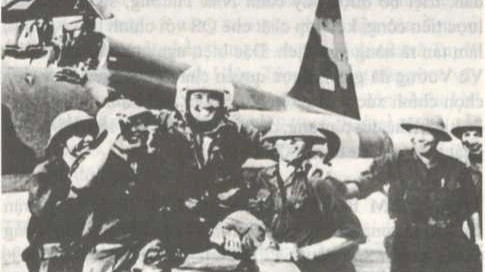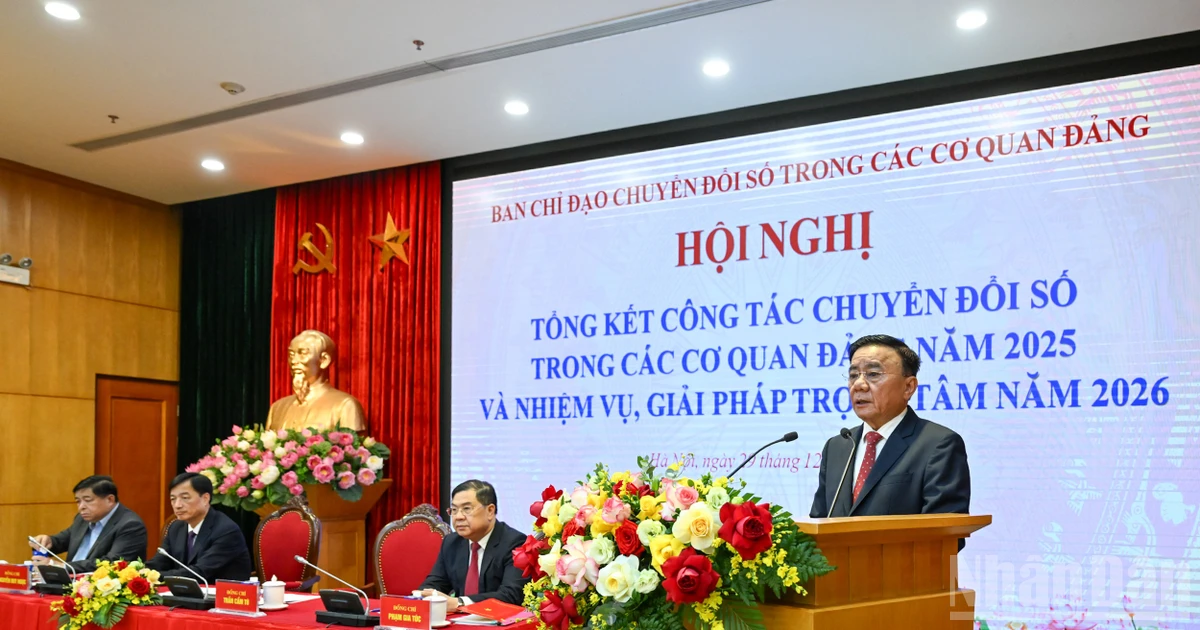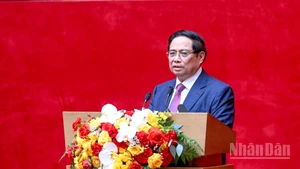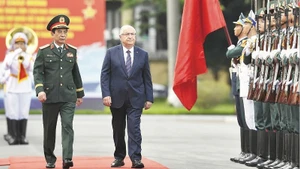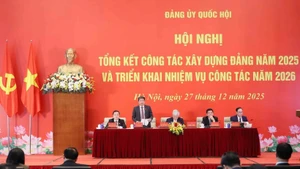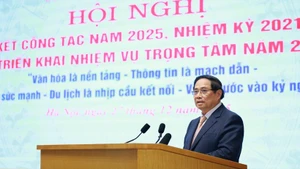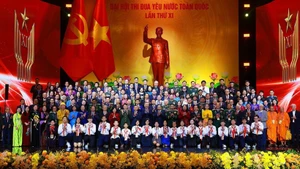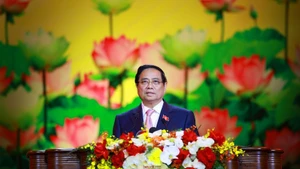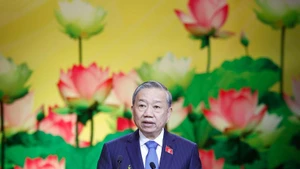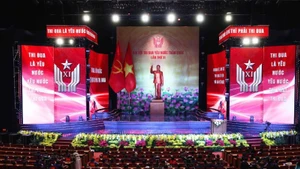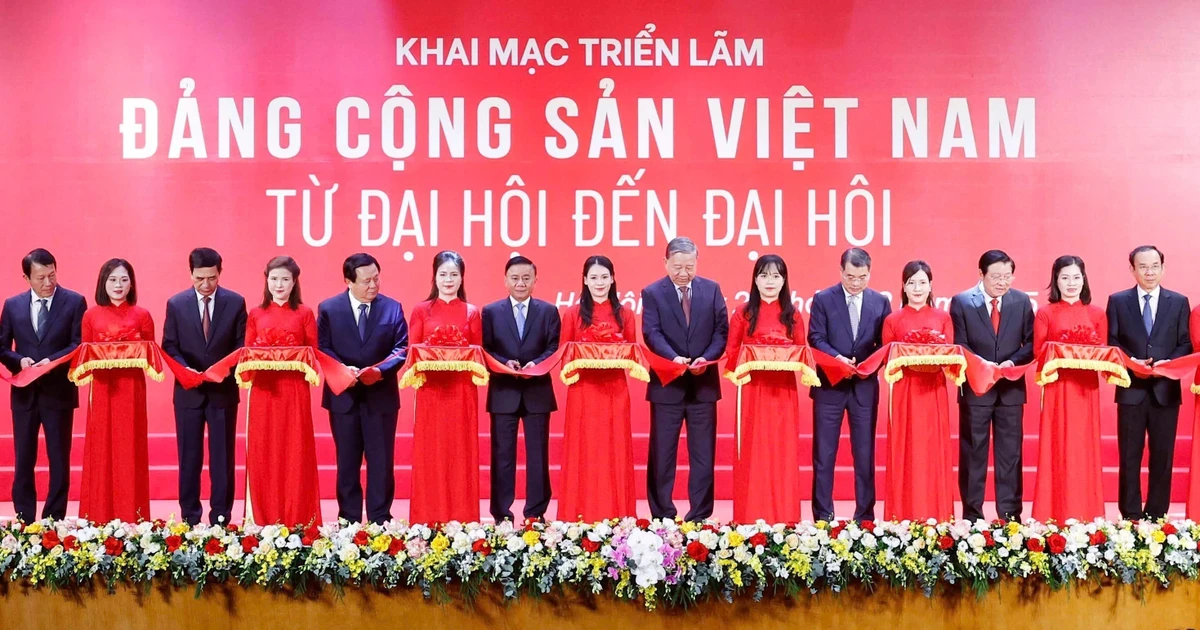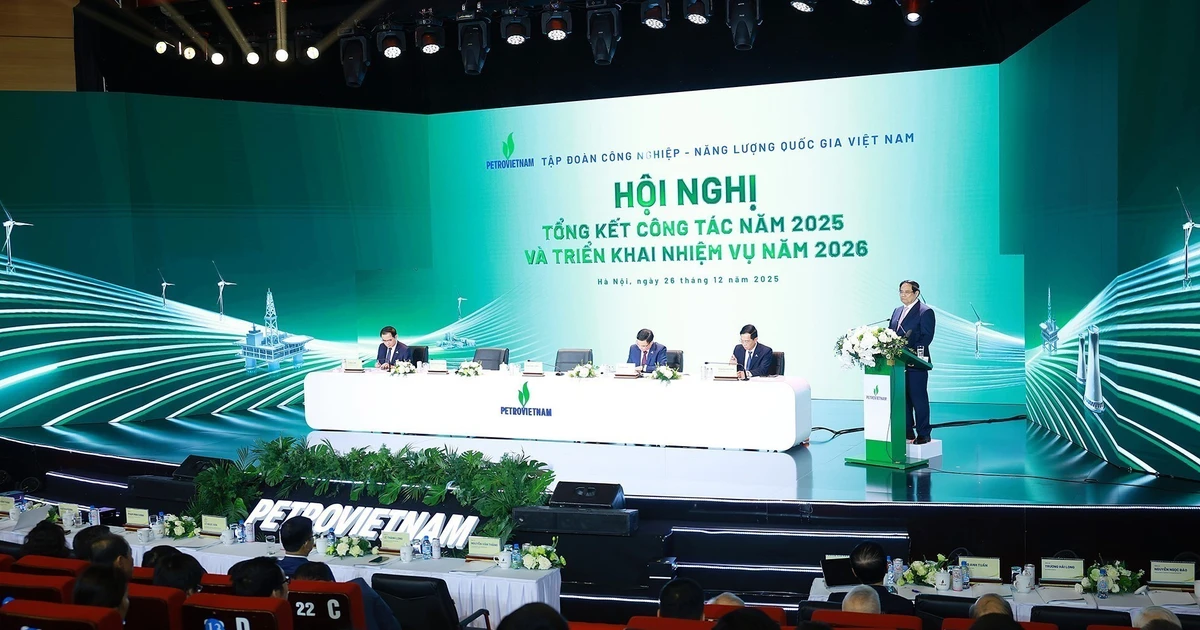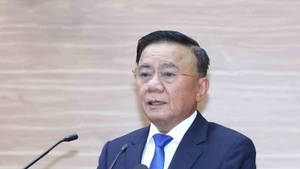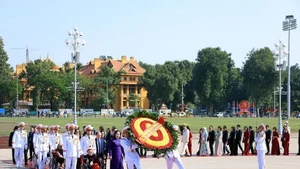On April 8, 1975, on the front line, comrade Le Duc Tho, on behalf of the Politburo, announced the decision to establish the command for the campaign to liberate Saigon - Gia Dinh. He also acted as the Politburo's representative within the campaign command. General Van Tien Dung was appointed as the Commander, while comrade Pham Hung served as Political Commissar. The Deputy Commanders were comrades Tran Van Tra, Le Trong Tan, and Dinh Duc Thien. Le Ngoc Hien was appointed Acting Chief of Staff. Comrade Nguyen Van Linh was responsible for coordinating the popular uprising, and comrade Vo Van Kiet was in charge of post-liberation takeover efforts.
Later, the campaign command proposed to the Politburo that the campaign be named the Ho Chi Minh Campaign, and this proposal was approved. On April 22, 1975, the Politburo additionally appointed Lieutenant General Le Trong Tan as Deputy Commander and Lieutenant General Le Quang Hoa as Deputy Political Commissar cum Chief of Political Affairs.
On the same day, April 8, 1975, Group 232 (a core unit of the Southern Region with corps-level scale, established in early February 1975), led by Major General Nguyen Minh Chau as Commander and Colonel Tran Van Phac as Political Commissar, captured key positions including Ben Cau, Moc Bai, An Thanh, Tra Cao, and Queo Ba. This opened a route for the main forces to move into the Zone 8 delta region, thus forming a strategic encirclement while severing and isolating Saigon from the Mekong Delta.
On the morning of April 8, 1975, pilot Nguyen Thanh Trung (an undercover revolutionary operative within the air force of the Saigon army) flew an F5E aircraft to bomb the Independence Palace, then landed safely at a provisional airstrip in the liberated area of Phuoc Long.
In Ninh Thuan, after Commando Company 311 secured the junction leading to the airfield, on April 8, 1875, enemy forces launched a counter-attack from the airbase. The company, alongside residents of Xom Dua and Do Vinh Hamlet, courageously fought throughout the day.
Also on the same day, Regiment 812 of Military Zone 6, along with Battalion 200C and local forces, launched an attack and destroyed the military sub-sector at Thien Giao (Ma Lam), a key point in the north-western defensive line of Phan Rang Town.
In the South-West Region, in compliance with the orders of the Southern Command and in coordination with the operation at Xuan Loc, although preparation time was insufficient, on April 8, 1975, Military Zone 9 ordered an attack on Tra Noc Airfield (Can Tho). Division 4 engaged in fierce fighting with enemy forces along Vong Cung Road. Regiment 10 (under Division 4) and Battalion 2 Tay Do crossed the road and attacked Tra Noc Airfield.
Simultaneously, the Can Tho City special task force and the regional artillery unit attacked both the Tra Noc and Lo Te airfields, allowing Division 4 to advance on the airfield and launch an assault on Can Tho City.
At Long Chau Ha on April 8, 1975, Regiment 101 received orders to redeploy to Can Tho as a reserve unit within Division 4. Two independent battalions remained behind to continue destroying the Phu Nhuan Village military sub-sector and two enemy posts along the 10-kilometre-long Mop Van Canal.
On the same day, April 8, 1975, the Southern Command organised commando forces to participate in the campaign to liberate Saigon - Gia Dinh. Commando Group 27 and Commando Brigade 316 — Saigon special task force — were reorganised and deployed into units operating in various directions surrounding Saigon. Each unit had a joint command board comprising mobile core commandos, special task force commandos, and officers from the Saigon — Gia Dinh Regional Command.
Also on April 8, 1975, the commando forces, in coordination with the main army corps, began launching assaults to break through the outer defensive perimeter. Commando units attacked enemy bases, posts, and military sub-sectors, contributing to creating the conditions necessary for the Saigon – Gia Dinh liberation campaign.
On April 8, 1975, Commando Regiment 116 seized Nuoc Trong Armoured Officer School, using firepower to attack the Loi Ho special forces camp, Yen The base, and Long Binh base. At the same time, Regiment 113 attacked and destroyed the Binh Y bomb depot, and used DKB and mortars to bombard Bien Hoa Airfield.
Fulfilling the task of transporting troops and weapons to the South, on April 8, 1975, the third convoy consisting of 100 vehicles from Transport Regiments 11 and 13 under the Truong Son Command, along with Air Defence Division 367, carrying fuel, ammunition, and the full technical equipment of Army Corps 1, moved straight from Vinh Chap towards Dong Xoai.
On the same day, Transport Division 471 of the Truong Son Command received urgent orders to mobilise Army Corps 3 and one division of Army Corps 1 into the Southern Region. At the same time, the division had to quickly transport 6,100 tonnes of unplanned artillery ammunition for the campaign, mostly 130mm and 122mm shells, stockpiled across Se Su, Trao, in Quang Nam Province, and at Da Nang Port.
